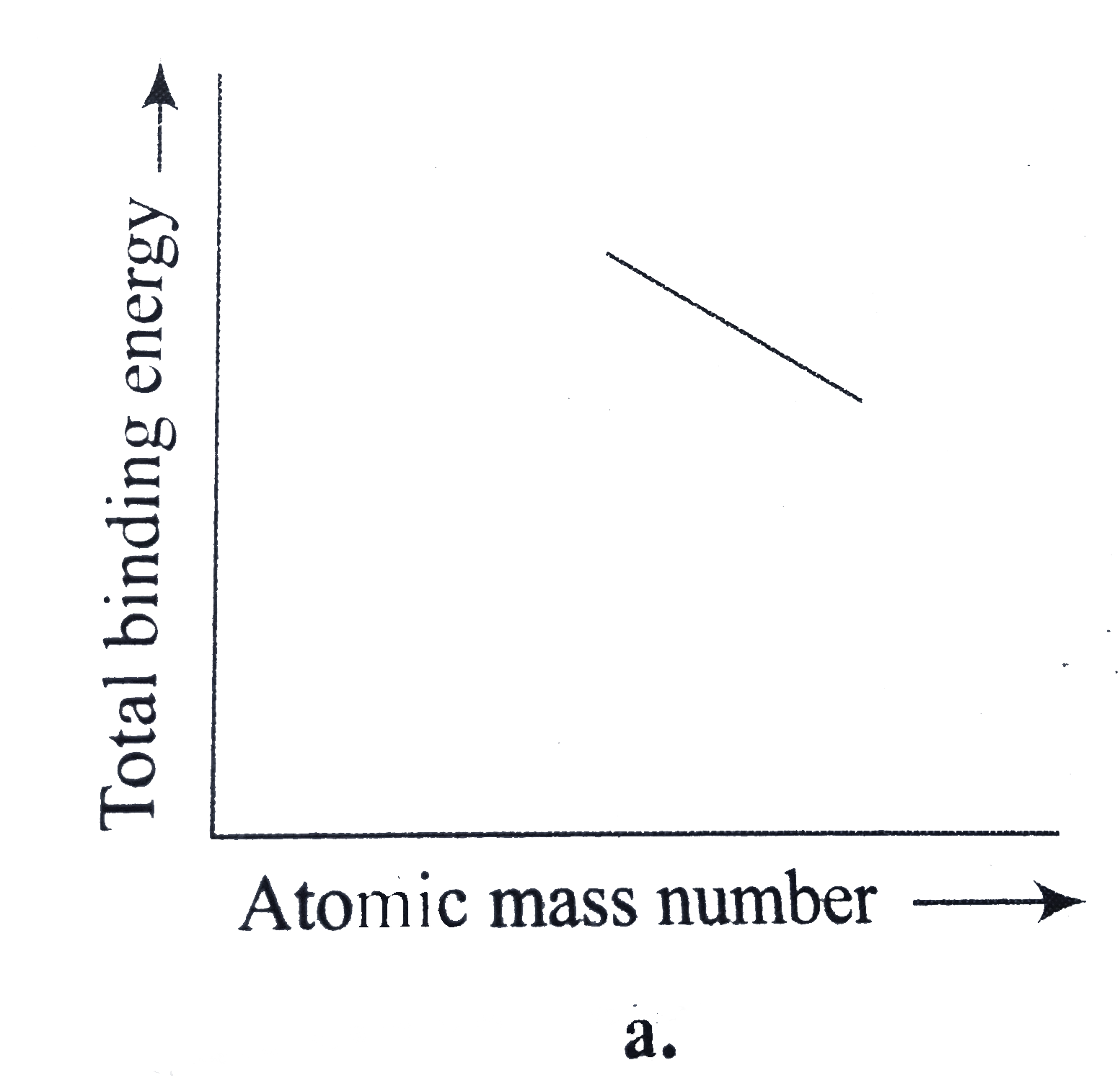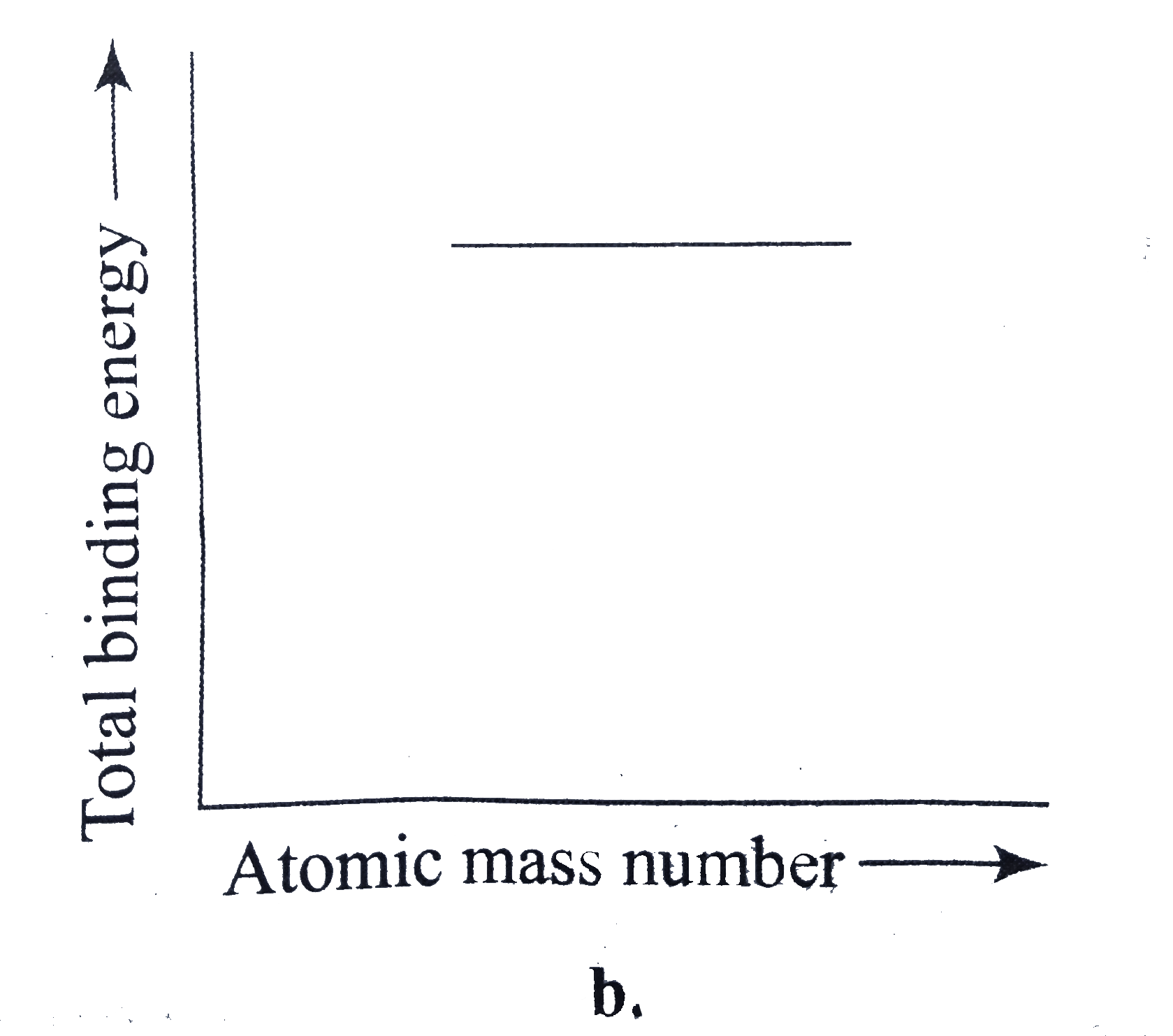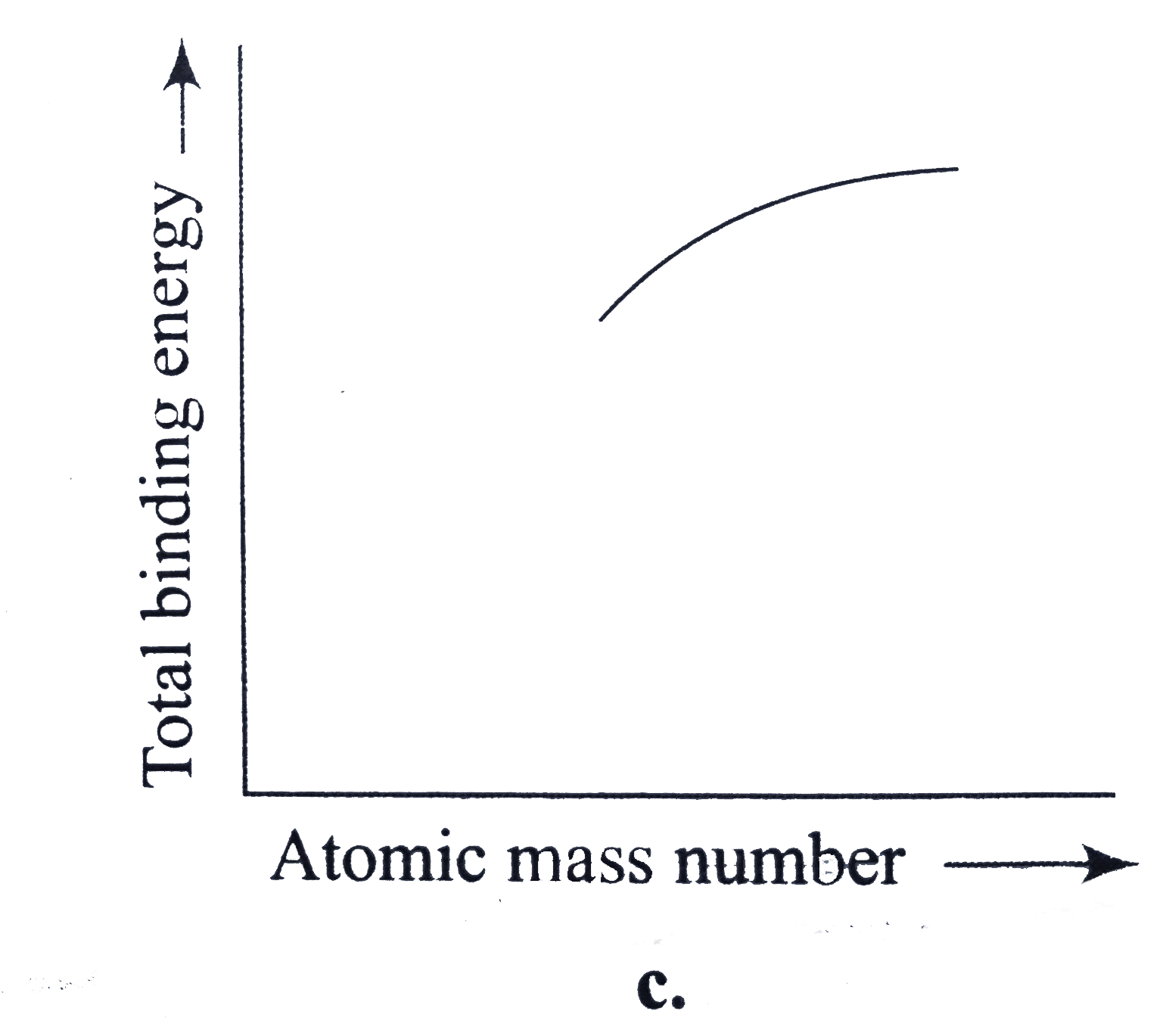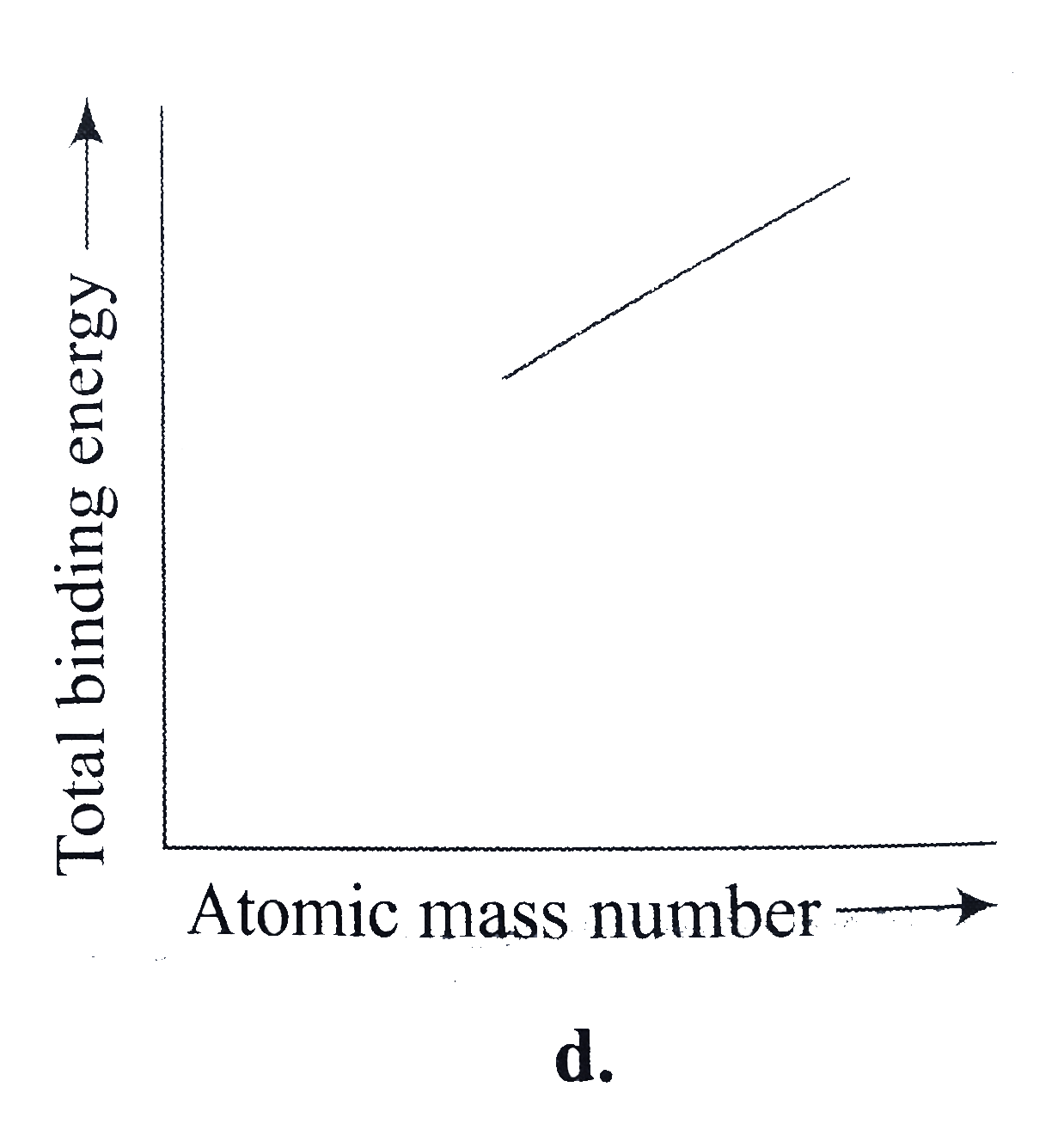The compound unstabel nucleus .23692U often decays in accordance with the following reaction
.23692U→.14054Xe+.9438Sr + other particles
During the reaction, the uranium nucleus ''fissions'' (splits) into the two smaller nuceli have higher nuclear binding energy per nucleon (although the lighter nuclei have lower total nuclear binding energies, because they contain fewer nucleons).
Inside a nucleus, the nucleons (protonsa and neutrons)attract each other with a ''strong nuclear'' force. All neutrons exert approxiamtely the same strong nuclear force on each other. This force holds the nuclear are very close together at intranuclear distances.
Why is a .42He nucleus more stable than a .43Li nulceus?
A
The strong nuclear force is larger when the neutron to proton ratio is higher.
B
The laws of nuclear physics forbid a nucleus from contaning more protons than neutrons.
C
Forces other than the strong nuclear force make the lithium nulceus less stable.
D
None of the above.
Video Solution
Text Solution
The correct Answer is:a
According to the passage, all nucleons attract each other with the same strong nuclear force. So, the strong nuclear forceholds together three protons and one neutron (.43Li) just as vigorously as it holds together two protons and two neutrons (.42He). But other forces play a role, too. Specifically, protons electrostatically repel other protons. This repulsion 'tries' to make a nucleus fly apart. Since (.42He) contains only two protons, the attractive strong nuclear force overcomes the repulsion of the protons.Therefore, the nulceus holds together. But in (.43Li), the mutual repulsion of the three protons overcomes the strong nuclear attraction, and the nucleus falls apart (or undergoes radioactive decay into a more stable nucleus).
|
Topper's Solved these Questions
- NUCLEAR PHYSICSBook:CENGAGE PHYSICSChapter:NUCLEAR PHYSICSExercise:Integer
Explore 6 Videos
- NUCLEAR PHYSICSBook:CENGAGE PHYSICSChapter:NUCLEAR PHYSICSExercise:Fill In The Blanks
Explore 5 Videos
- NUCLEAR PHYSICSBook:CENGAGE PHYSICSChapter:NUCLEAR PHYSICSExercise:Single Correct Option
Explore 182 Videos
- Moving charges and magnetismBook:CENGAGE PHYSICSChapter:Moving charges and magnetismExercise:Question Bank
Explore 20 Videos
- NUCLEIBook:CENGAGE PHYSICSChapter:NUCLEIExercise:QUESTION BANK
Explore 59 Videos
Similar Questions
Knowledge Check
The compound unstabel nucleus .23692U often decays in accordance with the following reaction
.23692U→.14054Xe+.9438Sr + other particles
During the reaction, the uranium nucleus ''fissions'' (splits) into the two smaller nuceli have higher nuclear binding energy per nucleon (although the lighter nuclei have lower total nuclear binding energies, because they contain fewer nucleons).
Inside a nucleus, the nucleons (protonsa and neutrons)attract each other with a ''strong nuclear'' force. All neutrons exert approxiamtely the same strong nuclear force on each other. This force holds the nuclear are very close together at intranuclear distances.
Which of the following graphs might represent the relationship between atomic number (i.e., ''atomic weight'') and the total binding energy of the nucleus, for nuclei heavier than .9438Sr ?A B
B C
C D
D
The compound unstabel nucleus .23692U often decays in accordance with the following reaction
.23692U→.14054Xe+.9438Sr + other particles
During the reaction, the uranium nucleus ''fissions'' (splits) into the two smaller nuceli have higher nuclear binding energy per nucleon (although the lighter nuclei have lower total nuclear binding energies, because they contain fewer nucleons).
Inside a nucleus, the nucleons (protonsa and neutrons)attract each other with a ''strong nuclear'' force. All neutrons exert approxiamtely the same strong nuclear force on each other. This force holds the nuclear are very close together at intranuclear distances.
A proton and a neutron are both shot at 100ms−1 toward a .126C nuleus. Which partilce, if either, is more likely to be absorebed by the nucleus?AThe protonBThe neutronCBoth particles are about equally likely to be absorbed,.DNeither particle will be absorbed.The compound unstabel nucleus .23692U often decays in accordance with the following reaction
_(92)236U→.14054Xe+_(38)^(94)Sr + other particles
During the reaction, the uranium nucleus ''fissions'' (splits) into the two smaller nuceli have higher nuclear binding energy per nucleon (although the lighter nuclei have lower total nuclear binding energies, because they contain fewer nucleons).
Inside a nucleus, the nucleons (protonsa and neutrons)attract each other with a ''strong nuclear'' force. All neutrons exert approxiamtely the same strong nuclear force on each other. This force holds the nuclear are very close together at intranuclear distances.
In the nuclear reaction presented above, the ''otter particles'' might be .AAn alpha particle, which consists of two protons and two neutronsBtwo protonsCone proton and one neutronDtwo neutrons
For atomic nuclei, the binding energy per nucleon
View SolutionThe average binding energy per nucleon is maximum for the nucleus
View SolutionThe binding energy per nucleon of nucleus is a measure of its.
View SolutionIn the process of fission, the binding energy per nucleon
View SolutionAs the mass number A increases, the binding energy per nucleon in a nucleus.
View Solution